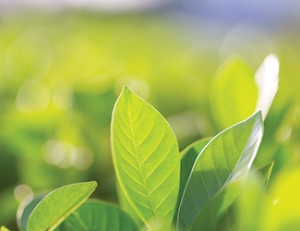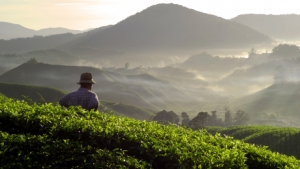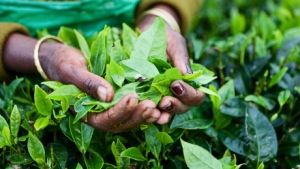A Brief History
Discover the ancient origins and fascinating history of tea!
Tea production, growing and processing is a skilled and time consuming process. In this section you'll find detailed information about the tea plant it's self, growing, harvesting, blending, packing and shipping...

The tea plant is an evergreen, tropical plant from the Camellia family, tea (Camellia sinensis) has green, shiny pointed leaves - not dissimilar to privet hedges seen in Britain - and was originally indigenous to both China and India.
In its wild state, tea grows best in regions which enjoy a warm, humid climate with a rainfall measuring at least 100 centimetres a year. Ideally, it likes deep, light, acidic and well-drained soil. Given these conditions, tea will grow in areas from sea level up to altitudes as high as 2,100 metres above sea level.
 Today, tea is grown on estates or smallholdings. A smallholding is privately owned and can be as small as 0.5 hectares or can cover several hectares. In various tea producing countries, where tea is grown on smallholdings, co-operatives are formed to build a tea-processing factory central to a group of smallholders. The owners of the smallholdings sell their plucked leaf to the factory for processing.
Today, tea is grown on estates or smallholdings. A smallholding is privately owned and can be as small as 0.5 hectares or can cover several hectares. In various tea producing countries, where tea is grown on smallholdings, co-operatives are formed to build a tea-processing factory central to a group of smallholders. The owners of the smallholdings sell their plucked leaf to the factory for processing.
An estate is a self contained unit, often hundreds of hectares in size, housing its own factory, tea growing area, schools, hospital, staff houses and gardens, places of worship, reservoir and guest house.
 Today, tea is grown as a bush approximately one metre high, for ease of plucking. Bushes are grown from cuttings or clones which are carefully nurtured in nursery beds until ready for planting out. Young bushes are planted approximately 1.5 metres apart in rows with a distance of one metre between each row. In the higher altitudes these rows follow the contours of the hills or mountainsides to avoid soil erosion.
Today, tea is grown as a bush approximately one metre high, for ease of plucking. Bushes are grown from cuttings or clones which are carefully nurtured in nursery beds until ready for planting out. Young bushes are planted approximately 1.5 metres apart in rows with a distance of one metre between each row. In the higher altitudes these rows follow the contours of the hills or mountainsides to avoid soil erosion.
At some of the higher altitudes terraces are built, again to avoid soil erosion. The bush itself is trained into a fan shape, with a flat top, called a plucking plateau, about 1x1.5 metres in area and takes between three to five years to come to maturity. This is dependent on the altitude at which the tea is grown. Before the first plucking, the bushes are severely pruned by a method known as "lung" pruning.
The bushes are plucked, mostly by hand, every 7-14 days. Altitude and climatic conditions of the growing area are the two deciding factors in this regrowth period. A tea bush grown at sea level will replace itself more quickly once plucked, than a tea bush growing at a higher altitude, where the air is often cooler. Only the top two leaves and a bud are plucked from the sprigs on the plucking plateau.
The plucked leaves are collected in a basket or bag carried on the back of the plucker and when this is full it is taken to a collection point where the plucked leaf is weighed before being taken to the factory for processing, or "making", as tea manufacture is known in the tea trade.
If pluckers are harvesting an area near the factory they will take their plucked leaf direct to the factory for weighing. On an estate, each plucker is credited with their own weights of tea for subsequent payment. A skilled plucker can gather up to between 30-35 kilogrammes of plucked leaf in a day, sufficient to produce about 7.5 to 9 kg of processed black tea.
As black tea has the major share of the tea market in terms of production, sales and amounts drunk, most tea factories produce black tea.